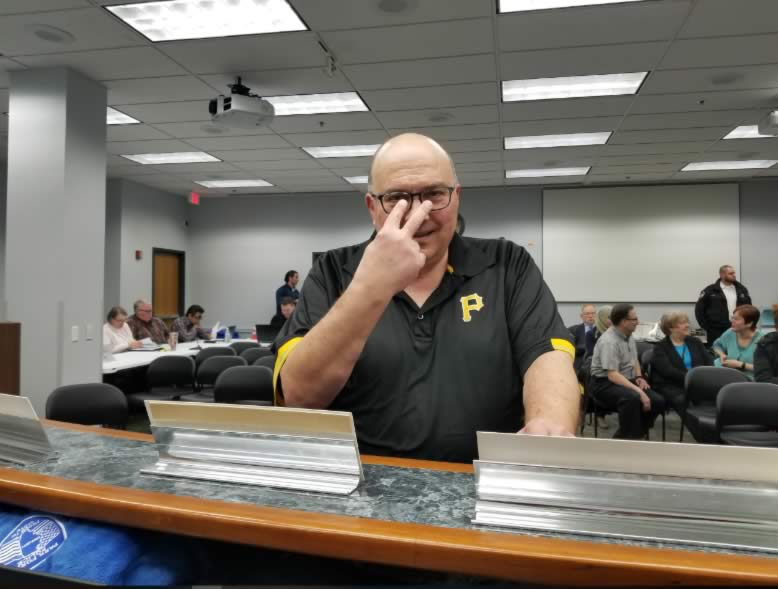
Commentary
By State Rep. Greg Harris
(D – 13th District)
If you are hoping to find good news about our FY10 State Budget, you will not find it here. Illinois now joins the rest of the country in having approved a new budget for our new fiscal year, but there is more bad news than there is good. According to yesterday’s Wall Street Journal, state revenues across the country have declined more than 20% in the last 12 months alone. The National Conference of State Legislatures estimated (as of April) that the combined budgetary deficits of the states this year exceeded $121 billion.
The NCSL has an interesting chart that shows many states attempted to fix their deficit problems by generating additional revenues: http://www.ncsl.org/?tabid =17253. Illinois , however, could not put together enough political will to raise revenues this year and has had to resort to an unsustainable mixture of budget cuts, possible employee reductions, borrowing and deferral of debt.
The final action taken by the General Assembly did cobble together a budget, but we have only succeeded in pushing the day of reckoning off until later this fiscal year at the earliest or FY11 at the latest. The following pieces of legislation comprise the majority of the State Budget for FY10:
- HB2206 which contains non-GRF grant funding except Medicaid:
http://ilga.gov/legislation/publicacts/96/PDF/096-00 46.pdf - HB2194 which contains the mandated Medicaid budget:
http://ilga.gov/legislation/publicacts/96/PDF/096-00 32.pdf - SB1216 which is the majority of the state budget including GRF:
http://ilga.gov/legislation/publicacts/96/PDF/096-00 42.pdf - SB1292 which authorized the Pension Obligation Notes:
http://ilga.gov/legislation/publicacts/96/PDF/096-00 43.pdf - SB1912 which is the Budget Implementation (BIMP) bill:
http://ilga.gov/legislation/publicacts/96/PDF/096-00 45.pdf
In most basic terms, elements of this package include:
- Governor’s assumption that he can produce cuts in staffing and operations through a combination of lay-offs, give-backs and/or furlough days. These items all must be negotiated with AFSCME and go through a separate legal process
- Allows the Governor to impose an additional $1.1 billion in reserves on the agencies
- Gives the Governor emergency rulemaking authority
- Raises the EFAB (base education funding) level from $5,959 to $6,119 per student
- Gives the Governor a total of approximately $9 billion to meet distributive grant needs of $10.5 billion from his FY10 introduced budget. This comes to around 86% of introduced. (More of what that truly means discussed later.)
- Of that $9 billion:
- $5.6 billion from GRF is for funding of distributive grants
- $2.23 billion from proceeds of the Pension Obligation Notes is for community-based human service providers as defined in the legislation
- $1.3 billion is for other distributive grants or operations as determined by the Governor
- Of that $9 billion:
- Requires the General Assembly to take 8 additional furlough days (total of 12) in FY10
- Corrects problems with some fund sweeps
- Freezes nursing home reimbursement rates (freezes CODB increases)
- Maintains Income Tax Refund deposits at FY09 levels
Now for the ‘devil is in the details’ department. The Governor and the state’s major employee union AFSCME, have NOT been able to reach accord on proposed cutbacks, so that projected savings is in question. No one knows how the $1.1 billion in additional reserves would be spread around, making operations planning uncertain at this point.
The 86% funded number for grant-based programs, while true in the macro sense will be very untrue on a program by program basis. Providers and community groups should be advocating loudly and often to preserve funding at acceptable levels for programs important to them. This advocacy should be directed to the Governor and his staff, as they have total discretion on the allocation of these fund
In the Governor’s FY10 introduced budget, he envisioned virtual elimination of all mental health services to non-Medicaid eligible persons, plus made substantial cuts to all programs in the Department of Human Services Community Health and Prevention Division. Therefore the so-called 86% budget would be dramatically lower for these programs.
You can browse through the Community Health and Prevention Division programs at this link:
http://www.dhs.state.il.us /page.aspx?item=31754
Simply eye-balling the major bureaus such as Maternal and Infant Health, Youth Services, Family Nutrition, Early Intervention, Domestic and Sexual Violence Prevention, etc. give you an idea what types of programs are on the chopping block.
Not mentioned in the budget bills themselves is the fact that this budget is workable only if around $4 billion in debt owed by the state is NOT paid in FY10 and is kicked forward into FY11.
So, it is possible that all things remaining equal, FY11 will be far worse than this year due to the following factors:
- Inability to issue further Pension Obligation Notes to cover normal and accrued costs of the pension ramp
- Continued decline in value of the pension fund assets
- Carry-forward of lapse spending and unpaid debt
- No savings from one time refinancing of debt as in FY10 (about $600 million)
- Decline in the state’s bond rating causing increased borrowing costs
- Only potential $900 million in ARRA funds
- Contractual wage increase obligations
These factors could total starting the year around $6 billion worse off than we are this year. There are a few happy notes:
- We will not have $1.4 billion in short term debt to repay
- Asset smoothing may improve the pension asset situation somewhat
- Any uptick in the economy would boost revenues.
The long and the short of it is that we will not be able to cut, borrow or finagle our way out of these problems any longer. The piper must be paid. For all the flip-flops and assorted ups and downs of this budget cycle, great credit should go to Governor Quinn for stepping up to the plate and telling the unpleasant truth about a need to raise revenues, cut costs and implement reforms.
I look forward to working with my colleagues, advocates, reform groups and the Governor in the coming months to craft a sensible revenue, reform and reduction package to get us off the precipice upon which we now find ourselves. Your thoughts and opinions are very welcome. Please contact me at [email protected]
Find this and every Springfield Update from Rep. Harris at http://www.gregharris.org/ updates.html








